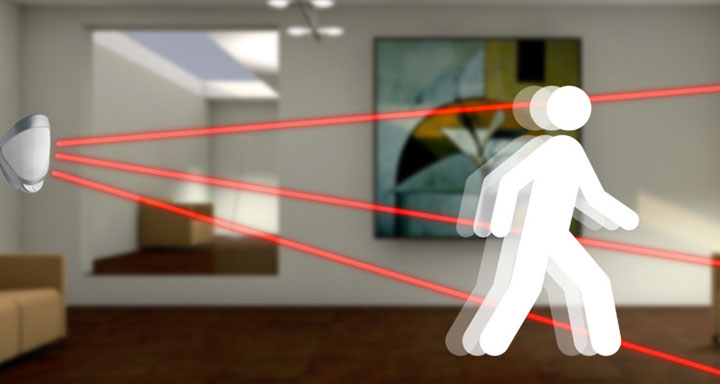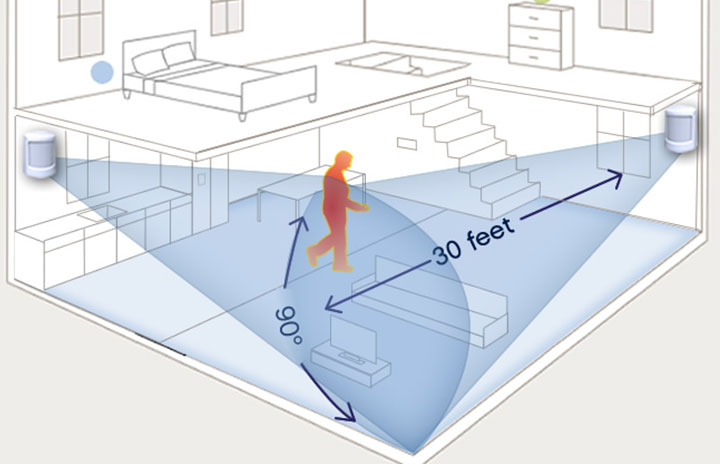How do motion detectors work in a home

When you start a home automation project, security and protection are commonly a top priority. Motion sensors are a key solution to a security system as they have various applications and boast great benefits, many applications and integration capabilities that result in useful solutions. Now of course, you may object to this as you might consider it unnecessary and makes you wonder: how much do you really need it? Under which circumstances are they necessary and how can motion sensors adapt to your way of life?
So, how do they work?
There are several different types of motion detectors that can be found in the market featuring either passive or active sensors, wired or wireless (though most smart sensors nowadays are wireless). It is important to choose the correct type of sensor for your home.
Active Sensors: This sensor operates by sending continuous ultrasonic sound waves, so if something interferes with the wave, the smart motion sensor will send a notification in the form of a signal. The signal can engage an alarm sound, a flashing light, it can even close doors.
Photosensors: This type of sensor uses light instead of ultrasonic sound waves and, just like with Active Sensors, if there's a change on the level of light, it will send the signal to alert everyone. Well, it depends, some smart motion sensors can be programmed in a way that only alerts certain rooms, because you don't want to panic everyone in the house over a stranded racoon.
Passive Infrared (PIR) Sensors: This type of sensors work with infrared. Living creatures emit heat from their bodies which infrared sensors can detect. Thys type of motion sensor is widely used for residential purposes. Some models offer 90° look-down features, so nothing passes by unnoticed.

Can I install a Motion Detector myself?
Many companies offer custom installation, and we believe that it would be wise to use a professional, after all, we're talking about home security and protection for your home, so it is best to have perfect functionality.

Where should I place a motion sensor?
Motion sensors are vital to any smart home because they are a major enhancer to the house´s security so naturally location its highly important. Remember that bespoke is the rule here. So you have the last word on where you want the motion sensor to be, keep in mind that detection range is a key factor most sensors come with a 110 ° detection/view angle. This setup gives a detection diameter of 8m at ceiling height of approximately 3m. So it’s important to think about the purpose of the motion detector on your Smart Home project and by following this indication, you´ll find the best place to locate your motion sensors.
Here´s a little help for you to get a better idea. Remember always to use qualified personnel to conduct the installation, and they are also reliable to clarify concerns about positioning and detection range.
Why are Motion Sensors relevant to Home Automation?
Motion detectors are essential to any home automation project, and supplements various other elements including security through identifying intruders and engaging alarms and smart locks, for a quick reaction. Its technology has evolved so much that they can be integrated with other security devices like surveillance cameras, smart lock, video recorders etc.